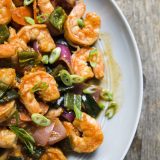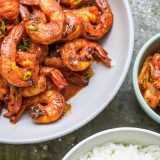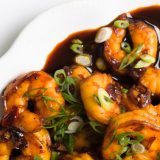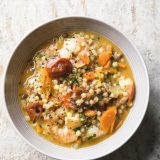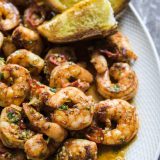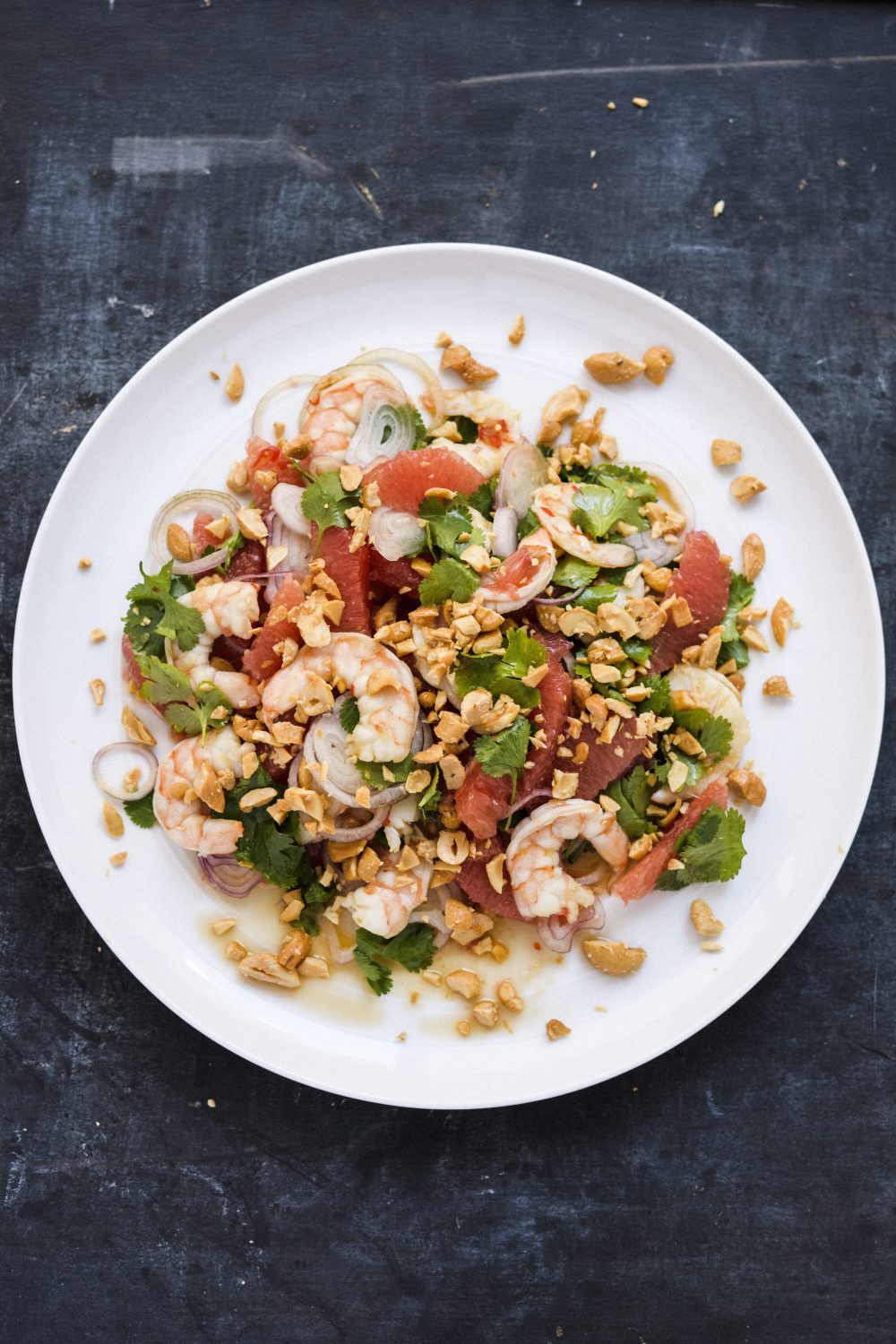With its sweet, pale meat, shrimp is appreciated worldwide, just as likely to end up in Italy with tomatoes and white wine, as in a light, zippy curry from Singapore. When cooked correctly, shrimp is tender, showing off its own inherent sweetness and absorbing the flavors of its marinade or sauce. But unfortunately, badly cooked shrimp is just as universal as the good stuff, either fleshy and undercooked or rubbery and overcooked.
The good news? A few tried-and-true techniques—like a combination of searing and simmering—guarantee perfectly cooked shrimp every time. And to learn more, check out Milk Street Cooking School’s class, Fearless Shrimp, on April 27.
Why is it tough to cook shrimp correctly?
Part of the problem are the shrimp itself: first off, even jumbo shrimp are small enough that they cook very quickly. Secondly, shrimp is lean, which works against home cooks. A protein with fat tends to be more forgiving, as fat protects meat from overcooking, keeping cuts tender and juicy. Shrimp needs a little more precision.
The other key issue is that cooking techniques that work for other less delicate proteins don’t necessarily apply. Getting a hard sear on a steak is delicious, but attempting it on shrimp is a fast track to overcooking. “Browning, while great for flavor, is not a reliable cue of internal doneness,” says April Dodd, assistant director of Milk Street Cooking School. Shrimp only browns if it’s exceptionally well dried. If you start with damp shrimp, waiting for them to develop color in a skillet ensures they will be bouncy and overdone by the time it comes off the heat. Any excess moisture, whether from a marinade or not properly drying, causes shrimp to steam before enough liquid cooks off for browning to start.
How should you cook shrimp?
There are endless ways to cook shrimp—frying, baking, roasting, boiling and so on—but our two favorite techniques reliably produce tender, tasty shrimp every time: poaching and the sear and simmer method. When shrimp are being added as a standalone component to a dish—say, on top of the Thai Grapefruit Salad with Shrimp we’re making in class—poaching is an effective way to guarantee texture. It’s gentle, infuses flavor, and avoids the browning conundrum. “Bring your poaching liquid to a boil, add your shrimp, cover the pot, then take it off the heat,” says Dodd. The shrimp will cook from the residual heat in the dish. “They’ll be perfect in 3 minutes.” As long as you maintain the correct ratio of liquid to shrimp—about 1 cup of liquid for every 4 ounces of shrimp—you’ll be good to go. Try adding flavor agents to the poaching liquid, like a couple of tablespoons of fish sauce and cilantro stems for the Thai-style salad.
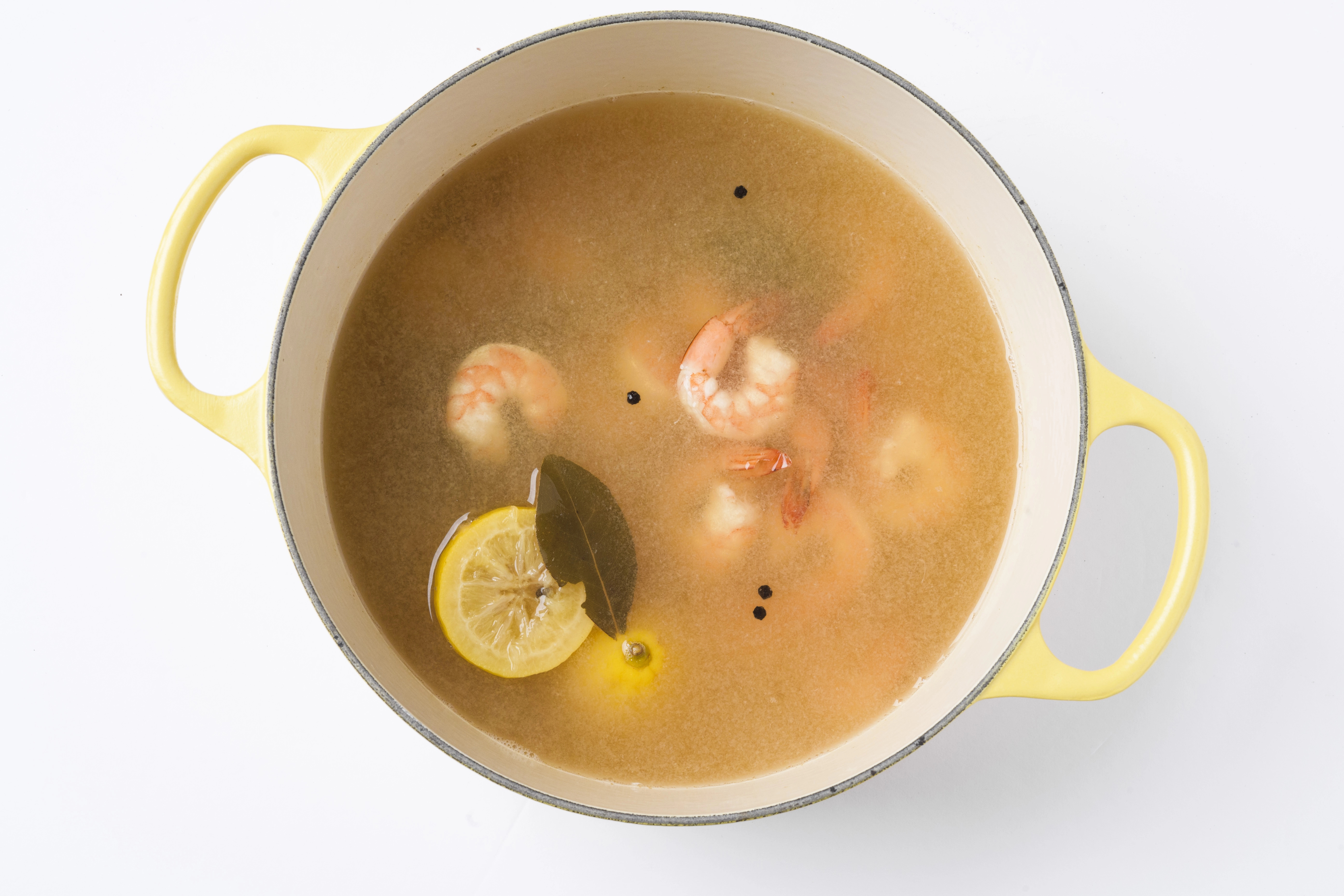
Searing and simmering, meanwhile, works when shrimp is more incorporated into a dish. In a hot skillet, cook size 21–25 shrimp on one side for about 45 seconds to develop a nice caramel color. Transfer the shrimp to a bowl and build your sauce—like the bold chipotle one we first learned in Mexico with cooking legend Diana Henry—and then return the shrimp to the skillet to finish cooking in sauce’s residual heat for 2 to 4 minutes, just like with poaching. This method gives you the best of both worlds; the initial sear gives the shrimp texture and richness, while finishing in the sauce allows it to absorb flavor while keeping it from overcooking.
How can I tell shrimp are cooked properly?
Shape! Correctly cooked shrimp have a gentle C-shaped curve. Overcooked shrimp is closer to an “O." A tight spiral indicates that the shrimp’s proteins have tightened, and the meat has expelled liquid, becoming dry and rubbery. Another trick? “Shrimp and lime are friends,” says Dodd. “If it works for the cuisine you’re taking inspiration from, a squeeze of lime after shrimp is off the heat helps relax the proteins.”
More tips for perfectly cooked shrimp
Start with the right stuff.Many recipes refer to “small” or “large” shrimp, but what does that actually mean? When looking at packaging, shrimp per pound counts are the most reliable indicator: “21–25,” for example, indicates that roughly 21 to 25 shrimp fit in 1 pound. The smallest can be as high as 90 per pound, while the largest can be 10 or less.
Thaw slowly. Many of us use frozen, deveined shrimp (save yourself the trouble of deveining your own). For maximum food safety and the best possible texture, transfer your shrimp from the freezer to the fridge the day before you want to cook it and let it defrost slowly for the best texture. If you need to thaw it quickly, place a bag of frozen shrimp in room temperature water. Press the air out of the bag and use a heavy plate to weigh it down, so the shrimp stays under the surface.
Dry, dry, dry. If you’re keen on using high-heat cooking to develop color or flavor, prepare to work dry and fast. Before cooking, pat your shrimp dry as thoroughly as possible. Start with a super hot wok or grill and cook 21–25 size shrimp for 30 seconds on each side.
Season first, sauce after. Don’t marinate your shrimp! If you’re carefully drying your shrimp after thawing and toss it into a liquid marinade, you’ve undone all your good work. You’ll end up with the same steaming problem and confused cook times that comes from working with wet shrimp. Instead, lean on spices. “Ground spices are dry, so they’re a great way to add flavor without risking overcooked shrimp.”
Ready for more?
To see some of these techniques in action, sign up for our livestream class Fearless Shrimp, coming up on April 27. This class is part of Milk Street’s Cooking Fundamentals series, where we show you how to grow your confidence in the kitchen with foundational cooking techniques.
Watch more on Milk Street TV’s Milk Street Basics
Join the conversation on Facebook, Twitter, Instagram and Pinterest
And if you're looking for more Milk Street, check out our livestream cooking classes with our favorite chefs, home cooks and friends for global recipes, cooking methods and more.
